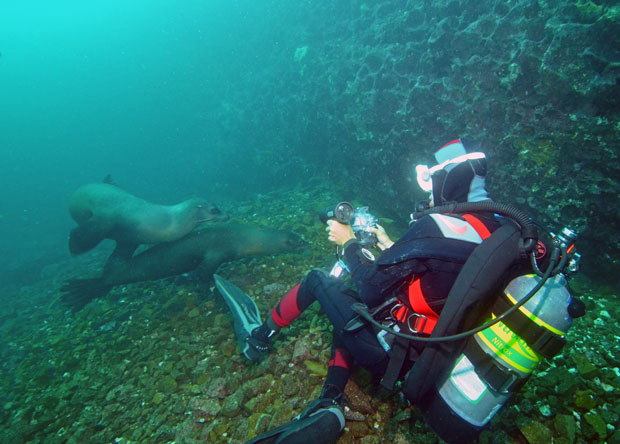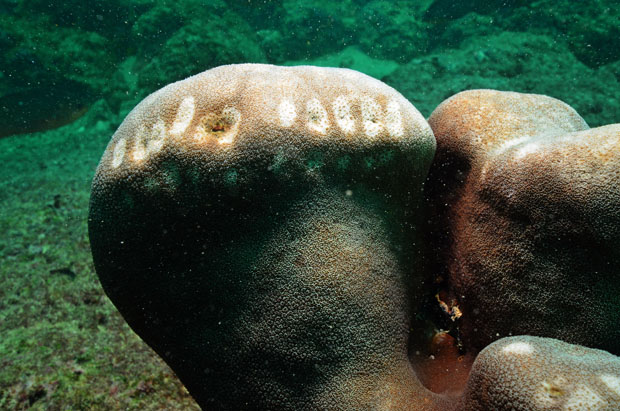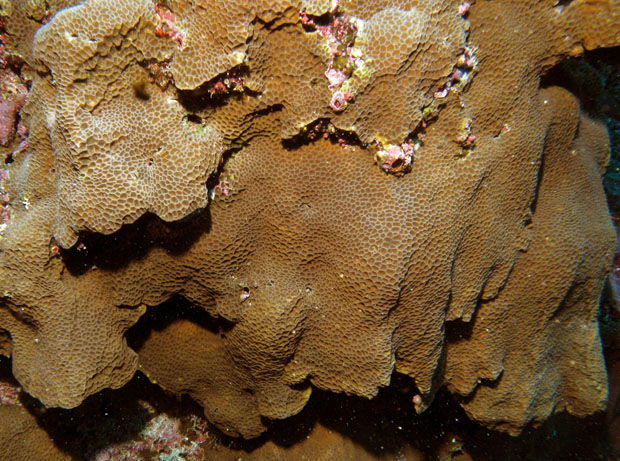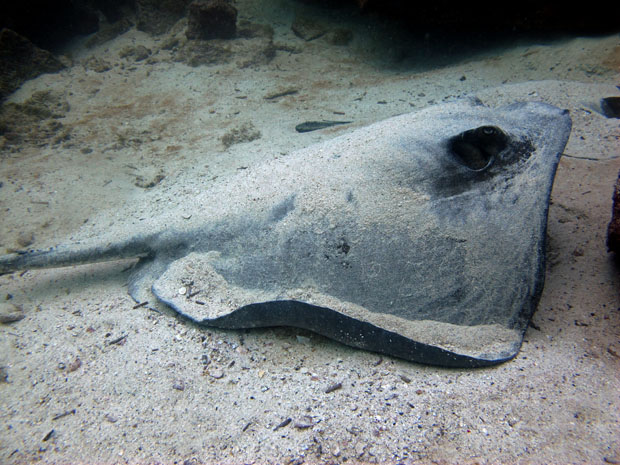This weekend marked the halfway point of the Galapagos expedition, both in time and in territory. After a week at Marchena, Darwin and Wolf, the latter two far to the north of the main group of islands, the ship will swing through a rough counterclockwise circle through the southern and western islands. We’ll stop at San Cristobal, Floreana and Isabela, and eventually circle back to Baltra over the coming week.
Saturday saw a few arrivals and departures, along with two dives in the Itibaca Canal between Baltra and Santa Cruz and an afternoon wall dive at Daphne Minor, a tiny islet north of Baltra, which was livened up by a few playful, curious sea lions. On Sunday morning, the Golden Shadow pulled up anchor and headed southwest for San Cristobal, the easternmost island in the Galapagos and home to the provincial capital, Puerto Baquerizo Moreno.

There were a few minor concerns at Wolf and Darwin: an invasive species of seaweed (algae) in the genus Caulerpa; and lots of damselfish, which kill coral and create seaweed “lawns.” But on the whole, the corals seemed to show a slow, steady improvement from the near-destruction caused by the El Niño events of 1982/83 and 1997/98. (We’ll talk much more about El Niño in an upcoming post.)

At Darwin, the dives focused on the reef running between Darwin Island and Darwin’s Arch, the only true coral reef in the Galapagos. In the cove near the island we found lots of Lepteroseris and two stands of Gardiner’s coral (Gardineroseris planulata), both of which are very rare. Another significant discovery at Darwin was thousands of skeletons of mushroom coral (Cycloseris sp.). This kind of coral, in the family Fungiidae, is known to grow in Española and Floreana to the south, but has never been recorded in this part of the archipelago, alive or dead. Even though the team didn’t find any living specimens, it’s exciting to have found it here at all.

At Wolf we found large stands of lobe coral (Porites lobata), a stony reef-building coral, up to 8 meters in diameter and 8 meters high. Some of these are centuries old.

In comparison to Wolf and Darwin, the coral communities in the central and southern islands are smaller, more widely spaced and less well studied, especially the unique free-living mushroom (fungiid) corals at Devil’s Crown, at partially submerged volcanic cone near Floreana. These communities have gone through phases of recovery and decline. It will be interesting to compare them to their northern neighbors, and it should help us understand the natural processes of coral reef resilience better.
(Photos/Images by: 1-2 Joshua Feingold, 3 Andrew Bruckner, 4 Brian Beck)
To follow along and see more photos, please visit us on Facebook! You can also follow the expedition on our Global Reef Expedition page, where there is more information about our research and team members.